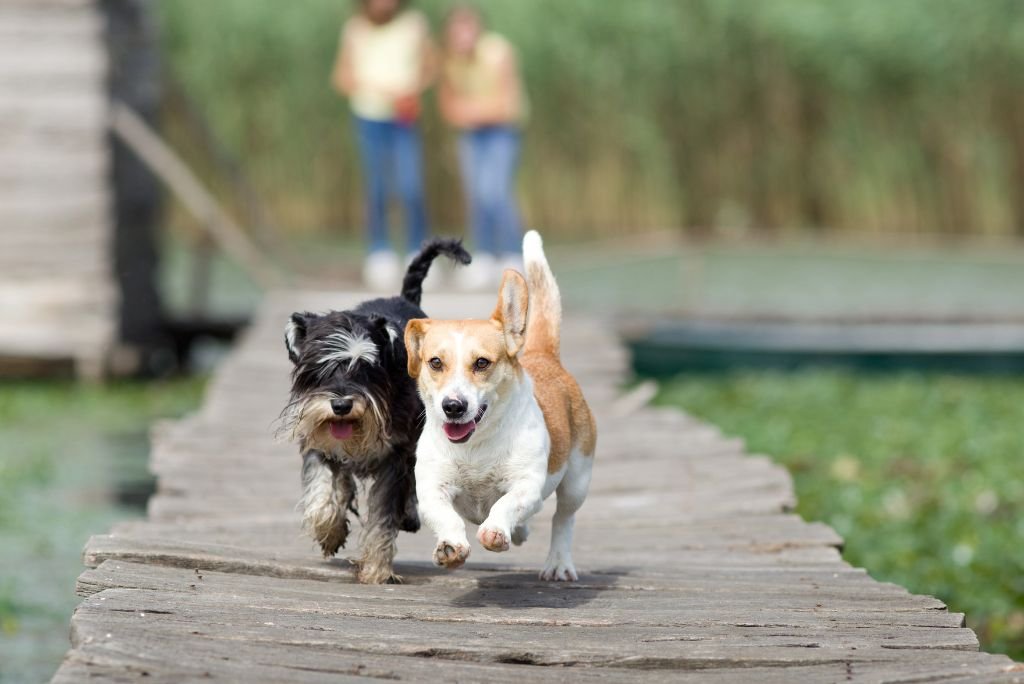What to Expect During Your Dog's Teenage Years
Do you remember when your dog was a puppy and everything it did make you melt with joy? Do you remember those times when you were using puppy training tips?
That isn't always the case when a dog hits puberty. They're capable of developing a diva-like air and acting out. Your dog will likely undergo several hormonal, psychological, and physical changes between the ages of 6 months and one year, a period is known as the "teenage" years of a puppy.
It's common knowledge that a new puppy will be full of energy and craziness, but it seems far fewer dog owners have been prepared for the other difficult time in a dog's life: puberty.
1. Establish a Solid Relationship with Your Adolescent Dog
You and your dog are building a solid foundation for your relationship. You've had the advantage of time if you've had your teenage dog since it was a pup. You've had a good long while to get to know and develop feelings for one another. That's fantastic news.
In other words, while a puppy's antics may have set off your alarm and left you searching for a quiet moment for weeks, adolescent antics may be surprisingly easier to tolerate due to the strength of the bond you've formed. While you'll still need plenty of patience during this time, your dog should be showing marked improvement in the following areas: He'll be housebroken, have learned basic commands, and no longer need your constant attention as he did as a puppy.
2. The Teething Process is Almost Over!
While teething doesn't end entirely until around seven to nine months old, the final stages aren't nearly as tricky as the first. The types of chew toys you give your adolescent dog should be evaluated and adjusted accordingly, as some dogs remain power chewers even into adulthood. What was acceptable for your dog when he was five months old may now be dangerous because of his adult teeth and jaw.
3. Canine Adolescents Have Different Bedtime Routines.
Your adolescent dog suddenly has boundless reserves of vitality. Rather than relying solely on physical exercise to wear out your young dog, you will have much more success if you equip yourself with lots of short, fun dog training sessions and brain games.
You should also avoid vigorous physical activity requiring quick directional changes or land softly after a jump. You should take extra care to safeguard your dog's joints until he is 12-18 months old, depending on his size.
Your adolescent dog will likely have trouble maintaining a consistent sleep schedule at night, which could result in a few restless evenings for you.
4. When Your Dog is a Teen, He or She Must Get Out and Meet New Friends!
Stay social. Even though you socialized your puppy well, don't stop now that he's a teenager. Imagine adopting a teen dog without knowing his socialization history. It's still important to gradually introduce him to new environments, people, and experiences while creating positive associations with each.
Your dog may become wary or even afraid of things he used to like. These periods can last days to weeks and occur multiple times during adolescence.
5. Adolescent Canines Develop a Heightened Curiosity for Outdoor Excursions.
Many dogs are reluctant to venture too far from home. They'll walk a short distance on a leash before stopping dead in their tracks. There is some intrinsic value to their natural form. Adolescence has the opposite effect, inducing an innate yearning to strike out on one's own and see the world. Your adolescent dog will have more energy to keep up with you on daily walks and find great joy in sniffing around new places. Now you can have a lot more fun on outings with your dog.
Do you recall feeling a sense of accomplishment after successfully training your puppy? Just think how fast he picked up basic commands like "sit," "lay down," "come," "leave it," "drop it," etc. What happened to all your expertise? Worry not if your dog seems to have forgotten everything he was taught. His young, ever-expanding brain still has the data floating around in there somewhere. He knows all this stuff but can't get to it now.
FAQs
What behavioral changes can I expect during my dog's teenage years?
During the teenage years, typically between 6 and 18 months, dogs may exhibit increased independence, testing boundaries, and might not listen as well as they used to. They may also have fluctuating energy levels, from hyperactivity to periods of laziness.
How will my dog's social behaviors change during adolescence?
Your dog might become more selective about which dogs and people they want to interact with, showing a preference for familiar faces over new ones. They may also display increased sexual behavior if not spayed or neutered, such as mounting or marking territory.
Will my dog's training be affected during the teenage phase?
Yes, you might notice a regression in previously learned commands and behaviors. This phase requires patience and consistent reinforcement of training to remind them of the rules and expectations. It's a critical period for reinforcing training and establishing boundaries.
How does adolescence affect my dog's physical health?
Adolescent dogs are generally in a phase of rapid growth and development, which can sometimes lead to growing pains or clumsiness. It's important to maintain a balanced diet and regular exercise to support their physical development.
What can I do to support my dog through their teenage years?
Provide plenty of mental and physical stimulation through games, training, and exercise to channel their energy positively. Keep training sessions short, fun, and rewarding. Consistency and patience are key in maintaining discipline and strengthening your bond during this challenging phase.

